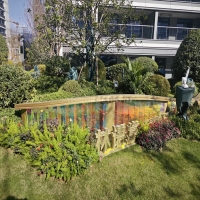Welcome to the website for landscape facilities products and knowledge.
What are the most common customer preferences regarding the table’s size or dimensions?
When selecting tables for residential or commercial spaces, customers consistently demonstrate clear preferences regarding size and dimensions that balance aesthetics, functionality, and spatial constraints. For dining tables, the most commonly preferred dimensions accommodate standard place settings while allowing comfortable movement. The ideal dining table typically measures between 36-42 inches in width, providing ample space for place settings without compromising conversation flow.
Rectangular tables remain the most requested shape, with lengths varying based on seating capacity. Most customers prefer tables measuring 72-96 inches long for 6-8 person seating, while smaller apartments often necessitate compact designs of 60 inches or less. Round tables have gained popularity for their space efficiency and social benefits, with diameters of 48-60 inches serving 4-6 people comfortably.
Height preferences show remarkable consistency, with standard dining tables maintaining 29-30 inches to align with typical chair heights. Counter-height tables at 34-36 inches appeal to customers seeking casual dining experiences, particularly in kitchen islands and breakfast nooks. For conference rooms, professionals prefer rectangular tables measuring 96-120 inches in length to accommodate 8-10 participants with adequate elbow room and document space.
Coffee table dimensions reveal strong preferences for proportional sizing relative to seating arrangements. Most consumers choose tables approximately two-thirds the length of their sofa and maintaining 14-18 inches of clearance between seating pieces. The rising popularity of multi-functional nesting tables demonstrates customer desire for flexible sizing options that adapt to different occasions.
Beyond specific measurements, customers increasingly prioritize adaptable solutions like extendable tables that accommodate both daily use and special gatherings. The growing awareness of accessibility requirements has also influenced preferences, with customers seeking tables with appropriate knee clearance and overhang for wheelchair users. These consistent preferences highlight how customers value tables that harmonize proportional aesthetics with practical functionality in their specific environments.
Related search:

Recommendation
Metal and acrylic color-changing combined curtain wall for large-scale public landscape facilities